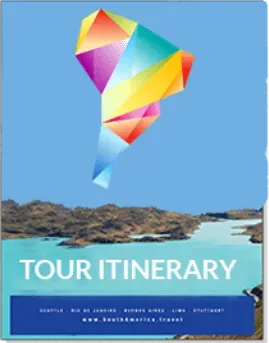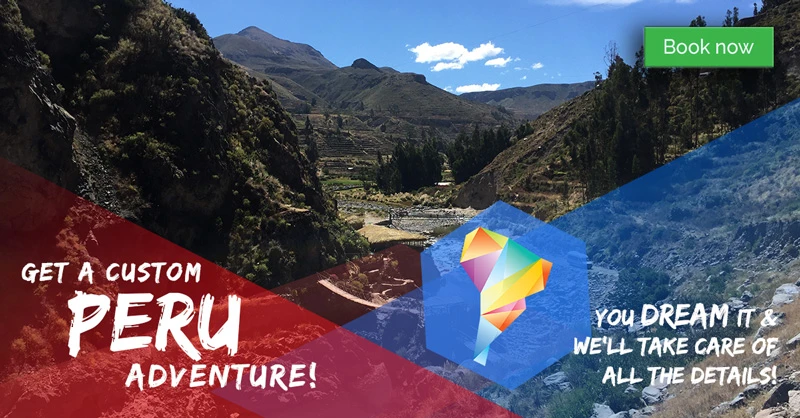Nov 7, 2018
|Last updated on December 23rd, 2020 at 03:37 pm
A Trip to the Heart of Peru: Discover the Colca Canyon!
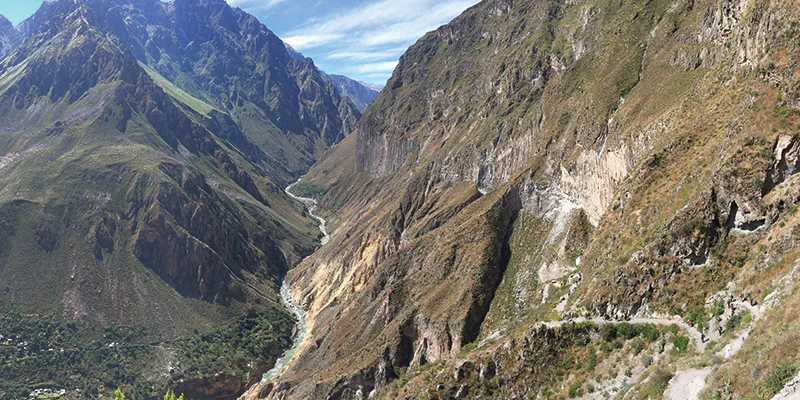 If I asked you to picture an incredible canyon, the first image that would come into your mind would probably be Arizona’s Grand Canyon. It’s known worldwide for its majesty and vastness. What if I told you that Peru has not just one but two canyons which are over twice as deep as the Grand Canyon? Pretty amazing, right? But wait, that’s not all! These two canyons are also the deepest of the Americas, and between the top 5 deepest canyons of the world!
If I asked you to picture an incredible canyon, the first image that would come into your mind would probably be Arizona’s Grand Canyon. It’s known worldwide for its majesty and vastness. What if I told you that Peru has not just one but two canyons which are over twice as deep as the Grand Canyon? Pretty amazing, right? But wait, that’s not all! These two canyons are also the deepest of the Americas, and between the top 5 deepest canyons of the world!
Canyons in Peru
Cotahuasi Canyon is ranked number one in Peru, with approximately 3,354 m depth (11,004 ft). The Colca Canyon takes second place for its depth (approx. 3,279 m/ 10,758 ft) but does not envy its big brother. Formed by a massive geological fault between the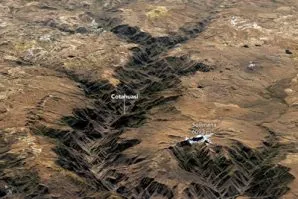 two enormous volcanoes of Coropuna (6,425 m / 21,079 ft) and Ampato (6,318 m/ 20,728 ft), the Colca Canyon and its Valley constitute one of Peru’s most dramatic and spectacular natural landscapes, a real paradise to nature lovers and culture enthusiasts. What makes the canyon so special is not just its depth and vastness, but also its incredible scenery’s change along its 100 km (62 mi) passage. Its emblematic attractions include massive volcanoes, giant condors, gorgeous trekking routes, lamas and vicuñas, and unshakeable Spanish, Inca, and Pre-Inca traditions little altered since the conquistadors arrived in the 16th century. Another point in its favor is that the region is still little visited compared to the other main destinations in Peru, like Cusco and Machu Picchu. #FunFact: The Colca Canyon is more accessible than the Cotahuasi Canyon. It’s incredible size and natural splendor will easily be one of the best memories you will take back home from your trip to Peru! It definitely was for me.
two enormous volcanoes of Coropuna (6,425 m / 21,079 ft) and Ampato (6,318 m/ 20,728 ft), the Colca Canyon and its Valley constitute one of Peru’s most dramatic and spectacular natural landscapes, a real paradise to nature lovers and culture enthusiasts. What makes the canyon so special is not just its depth and vastness, but also its incredible scenery’s change along its 100 km (62 mi) passage. Its emblematic attractions include massive volcanoes, giant condors, gorgeous trekking routes, lamas and vicuñas, and unshakeable Spanish, Inca, and Pre-Inca traditions little altered since the conquistadors arrived in the 16th century. Another point in its favor is that the region is still little visited compared to the other main destinations in Peru, like Cusco and Machu Picchu. #FunFact: The Colca Canyon is more accessible than the Cotahuasi Canyon. It’s incredible size and natural splendor will easily be one of the best memories you will take back home from your trip to Peru! It definitely was for me.
Map Featuring Many of the Peru Areas in this Post:
The Colca Canyon Valley is located about 160 km (100 mi) northwest of Arequipa. Arequipa is the best city to access the canyon. Therefore, most Colca Canyon Peru Tours begin in Arequipa. Before your Colca tour, I highly suggest dedicating some time to explore this charming white city, which glows with colonial buildings and beautiful baroque churches.
Peru’s Colca Canyon Tours:
All Colca Canyon Tours incorporate an early morning start. I can say from personal experience that it may hurt at first, but you won’t regret the early rise! Keep your eyes wide open and prepare to enjoy a fascinating adventure in the deepest heart of Peru!
Experience the Volcanoes and the Natural Reserve
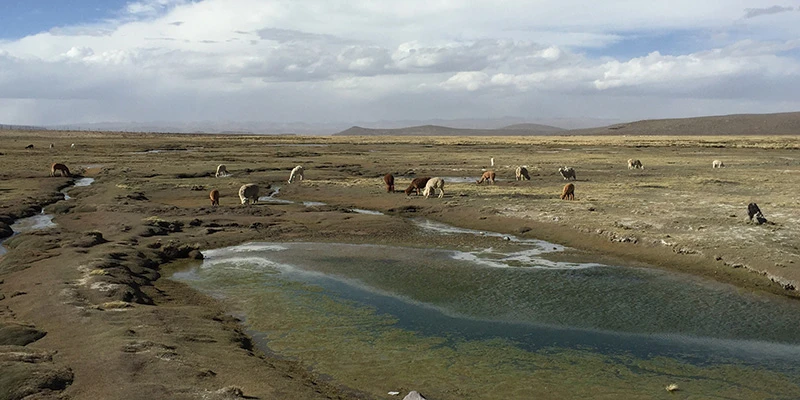 Start your journey with a spectacular 154 km (96 mi) drive from Arequipa to Chivay, the main village of Colca Canyon. Sight the El Misti (5,822 m/ 19,101 ft), Chachani (6,075 m/ 19,931 ft), and Pichu Pichu (5,665 m/18,585 ft) Volcanoes as you head to the Salinas and Aguada Blanca National Reserve. The reserve hosts beautiful lagoons and wetlands and is the habitat of an assortment of birds including flamingos and crested ducks. It is also inhabited by vicuñas, alpacas, llamas, and guanacos. Here, the first stop will be at the Pampa Canahaus part of the reserve, where you can spot vicuñas grazing undisturbed in the area. This point is around 3,400 m (11,154 ft) above sea level.
Start your journey with a spectacular 154 km (96 mi) drive from Arequipa to Chivay, the main village of Colca Canyon. Sight the El Misti (5,822 m/ 19,101 ft), Chachani (6,075 m/ 19,931 ft), and Pichu Pichu (5,665 m/18,585 ft) Volcanoes as you head to the Salinas and Aguada Blanca National Reserve. The reserve hosts beautiful lagoons and wetlands and is the habitat of an assortment of birds including flamingos and crested ducks. It is also inhabited by vicuñas, alpacas, llamas, and guanacos. Here, the first stop will be at the Pampa Canahaus part of the reserve, where you can spot vicuñas grazing undisturbed in the area. This point is around 3,400 m (11,154 ft) above sea level.
Prepare to Acclimatize
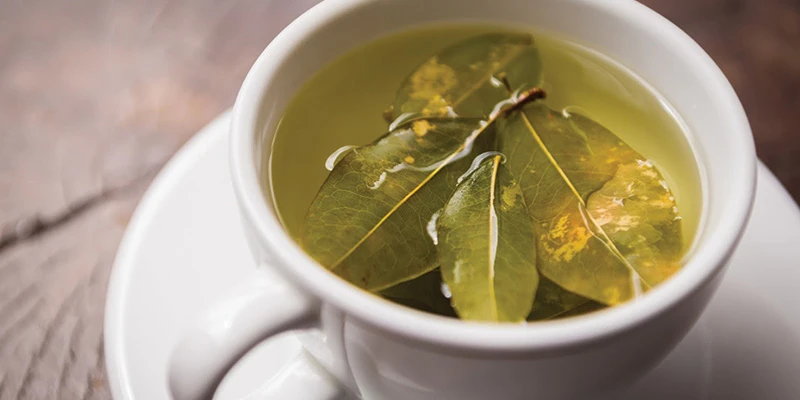 To acclimatize to the high altitude, enjoy a short break at a rustic restaurant and quench your thirst on a local ‘mate de coca’. This is an herbal tea infusion which originates in the Andes and has beneficial effects against altitude sickness. Altitude sickness remedies vary across the board. It is best to speak to your doctor regarding your options.
To acclimatize to the high altitude, enjoy a short break at a rustic restaurant and quench your thirst on a local ‘mate de coca’. This is an herbal tea infusion which originates in the Andes and has beneficial effects against altitude sickness. Altitude sickness remedies vary across the board. It is best to speak to your doctor regarding your options.
Visit the Pata Pampa Pass
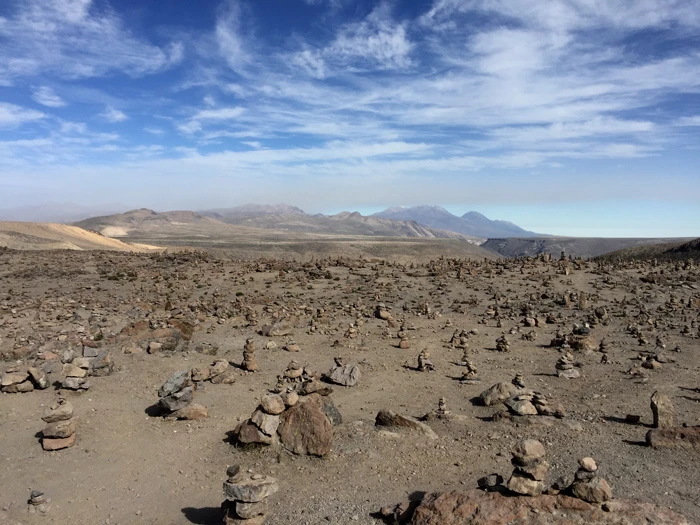 Next, visit the Pata Pampa Pass. Located at the far edge of the Reserva Nacional Salinas y Aguada
Next, visit the Pata Pampa Pass. Located at the far edge of the Reserva Nacional Salinas y Aguada 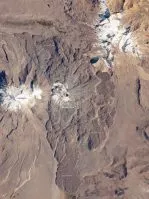 Blanca, this is the highest point between Arequipa and Chivay (4,910 m/ 16,108 ft). Here, feel the presence of sharp mountain peaks and massive volcanoes of Ampato, Sabancaya, Hualca-Hualca, Mismi, and the Chila Mountain Chain. Taste the rarefied air of the pass and appreciate the intriguing rock formations to be seen under the gaze of the Volcanoes. #FunFact: Did you know according to National Geographic, the Mismi Nevado, a snow-capped peak located north of Colca which belongs to the Chila mountain range, is the official source of the Amazon River!?
Blanca, this is the highest point between Arequipa and Chivay (4,910 m/ 16,108 ft). Here, feel the presence of sharp mountain peaks and massive volcanoes of Ampato, Sabancaya, Hualca-Hualca, Mismi, and the Chila Mountain Chain. Taste the rarefied air of the pass and appreciate the intriguing rock formations to be seen under the gaze of the Volcanoes. #FunFact: Did you know according to National Geographic, the Mismi Nevado, a snow-capped peak located north of Colca which belongs to the Chila mountain range, is the official source of the Amazon River!?
Marvel at Agricultural Terraces
Once you leave Patopampa Pass, you drop sharply into Chivay. Just before arriving in the village, you will be able to admire the spectacular multicolor terraces of the Colca Valley. These are manmade terraced fields stacked up like gigantic staircases on the steep canyon slopes. Many of the terraces date back to Inca times and have been in continuous use for over 1,000 years to grow crops such as potatoes, barley, beans, and quinoa. Quite impressive! 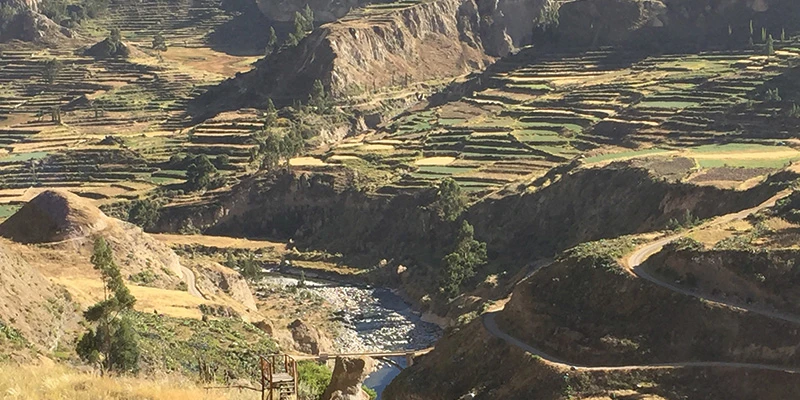 #FunFact: Did you know the name Colca refers to storage spaces which abound in the canyon’s cliffs, and are ideal for preserving the crops through the winter. Some of them also did duty as tombs for important people. Have a traditional lunch at the traditional Coporaque Village, and enjoy a nice stroll in the little town before the engine restarts.
#FunFact: Did you know the name Colca refers to storage spaces which abound in the canyon’s cliffs, and are ideal for preserving the crops through the winter. Some of them also did duty as tombs for important people. Have a traditional lunch at the traditional Coporaque Village, and enjoy a nice stroll in the little town before the engine restarts.
Enjoy Downtime at the Hot Springs
Upon arrival in Chivay, after a whole day of exploration and traveling, many travelers decide to end the day indulging in the nearby natural hot springs. Located 3km from town, the Caldera Hot Springs is a great place to acclimatize. The setting is idyllic and you can observe the canyon’s slopes while lying in the naturally heated pools in the open air. Meanwhile, you may be able to see enthusiastic zip-liners sailing overhead!
Watch for Condors
The canyon is home to the Andean Condor (Vultur gryphus), a species that has been the focus of worldwide conservation efforts. The best point to appreciate the flight of these magnificent birds is the Cruz del Condor viewpoint, located at 1,200 m (3,940 ft) below the rim of the canyon. This is the superstar highlight of the Colca Canyon! From this point, on a clear day, there are chances of observing huge Andean condors gliding majestically above the steep canyon walls with their massive wings spread. Definitely an unmissable natural show for any nature and photography lovers! Condors are more active between 8 am and 10 am, so get ready to rise early in order to make it to the performance! 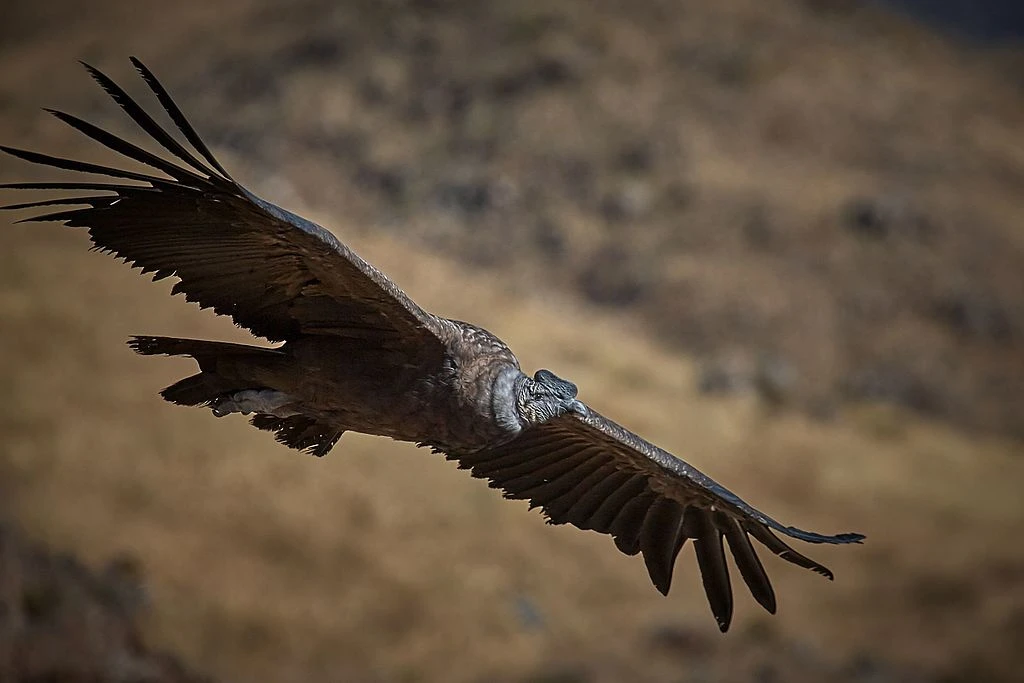 Adventurous travelers can take an optional 1-hour hike down the canyon, and examine its fascinating rock formations and the Canyon’s unique vegetation in detail. In the depths of the canyon vegetation can be almost tropical, with palm trees, ferns and even orchids in some isolated areas. Cacti line the road to the canyon, decorating the sparse vegetation with beautiful white, red and yellow flowers. Omnipresent in the Andes is the purple-blue lupines, which I fell in love with!
Adventurous travelers can take an optional 1-hour hike down the canyon, and examine its fascinating rock formations and the Canyon’s unique vegetation in detail. In the depths of the canyon vegetation can be almost tropical, with palm trees, ferns and even orchids in some isolated areas. Cacti line the road to the canyon, decorating the sparse vegetation with beautiful white, red and yellow flowers. Omnipresent in the Andes is the purple-blue lupines, which I fell in love with!
Visit Traditional Villages
Tours to the Colca Canyon can have some variation between each other; yet all of them will eventually pass through villages that have hardly changed in 500 years. Their churches still stand, despite being battered by earthquakes. People ride mules and tend farms, women still dress in their traditional voluminous Andean skirts and colorful hats, and excited kids call hello from the side of the road. Chances of meeting cute baby llamas are also very high – and I admit I found it very hard to resist their charm! 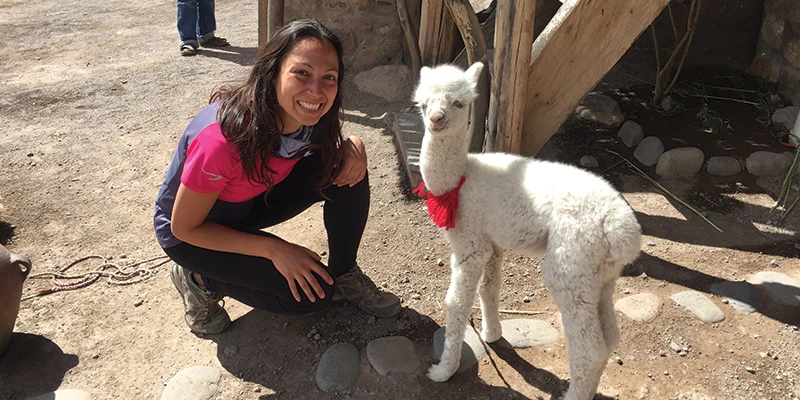 After the iconic stop at the Cruz del Condor, you will very likely be making a stop at the traditional town of Pinchollo and the Antahuilque viewpoint, where you can enjoy the 1,500-year-old terraces built by the Collaguas, a culture that inhabited the area way before the Inca conquest. Then, visit Choquetico and see its carved stone model of terraces and mountains. Continue the tour with a cultural experience at Maca, an Andean community that experienced a powerful earthquake in 1991. Finish with a visit to the town of Yanque and its grandiose baroque Inmaculada Concepción Church, known for being the most beautiful church in the whole valley. #FunFact: Did you know in Yanque each morning couples in traditional dress dance the watiti (a love dance of the native Quechua people who live in the Peruvian Andes) in the main square in front of the Inmaculada Concepción Church.
After the iconic stop at the Cruz del Condor, you will very likely be making a stop at the traditional town of Pinchollo and the Antahuilque viewpoint, where you can enjoy the 1,500-year-old terraces built by the Collaguas, a culture that inhabited the area way before the Inca conquest. Then, visit Choquetico and see its carved stone model of terraces and mountains. Continue the tour with a cultural experience at Maca, an Andean community that experienced a powerful earthquake in 1991. Finish with a visit to the town of Yanque and its grandiose baroque Inmaculada Concepción Church, known for being the most beautiful church in the whole valley. #FunFact: Did you know in Yanque each morning couples in traditional dress dance the watiti (a love dance of the native Quechua people who live in the Peruvian Andes) in the main square in front of the Inmaculada Concepción Church.
Finish at Cabanaconde
Finally, 35 km (22 mi) west of Yanque, and 12 km (7 mi) from the Cruz del Cóndor, you will find Cabanaconde. This is a smaller version of Chivay, only receiving one-fifth of the tourist traffic. The village sits at the edge of one of the deepest parts of the canyon and offers a magical view over it. The Colca spreads out in its great vastness, creating a dramatic fissure in the landscape. The colors of the canyon’s walls shift from grey to green to red to orange, all under a pale blue sky. Don’t forget to visit the local markets, selling esoteric agricultural and artisanal specialties, including embroidery and alpaca wool products. By strolling around these cute little villages, I was often thrown back to authentic scenes of countryside lifestyle, which I found extremely fascinating and inspiring, together with the intriguing stories of the indigenous communities who populate the valley. #FunFact: Did you know the indigenous communities of the Colca Canyon are descendants of two distinct pre-Inca ethnic groups: the Aymara-speaking Collaguas and the Quechua-speaking Cabanas. Traditionally, these groups distinguished themselves by performing different cranial deformations on their kids’ head. The Collaguas elongated them and the Cabanas flattened them. Both efforts tried to emulate the shape of their respective principal Apu (mountain god). Currently, this practice is no longer in use, and their ancestry is denoted by the shape of their traditional hats rather than their heads. Women’s hats are usually woven from straw and embellished with lace, sequins, and medallions for the Collaguas, located in the Chivay and Est area of the Canyon. The Cabanas, living at the west end of the Canyon, use hats with rounded tops, made of painstakingly embroidered cotton, instead. Despite population movement in the canyon is more fluid these days, you can still get a good idea of where you are by looking at the hat shapes. Both traditions include cultivating the pre-Inca stepped terraces. Towards the end of your tour, you will have the option to return to Chivay and transfer back to Arequipa or continue your way to Puno. If you have already visited Arequipa, this could be a good opportunity to explore Lake Titicaca and learn about another fascinating Peruvian subculture and unique lifestyle, which can be observed only in Puno and the lake area.
Alternative Programs for Trekkers
The Colca Canyon is known for its amazing trekking opportunities. The most adventurous travelers come here to quench their thirst for adventure. There is plenty of hiking available for all types of trekkers! Cabanaconde is one of the main trekking start points since it sits on the canyon’s rim. From there it is possible to descend, via a precipitous zigzagging path, to the deepest side of the canyon, reaching an oasis of fruit trees and idyllic retreat spots only reachable by foot or mule. Natural swimming pools and basic accommodation is found here, should you not be ready to climb the steep way back up on the same day. #FunFact: The hike is not easy due to the steep terrain and thin air, but the scenic rewards are worth it! Other interesting spots to be visited in the area are Uyo Uyo Ruins, reachable via a gorgeous and moderate trek and Madrigal Chimpa Fortress and lookout point.
When Should I Visit the Colca Canyon?
Are you ready to visit the Colca Canyon in Peru? In line with the typical weather in the Andes, the Colca Canyon is subject to a rainy season from December to March. The area is best visited from April to November when the climate is hot and sunny almost every day. Keep in mind that shoulder months (April and November) can also see rain in wet years.
This post was written by our very own Claudia Corona in Fall 2018
